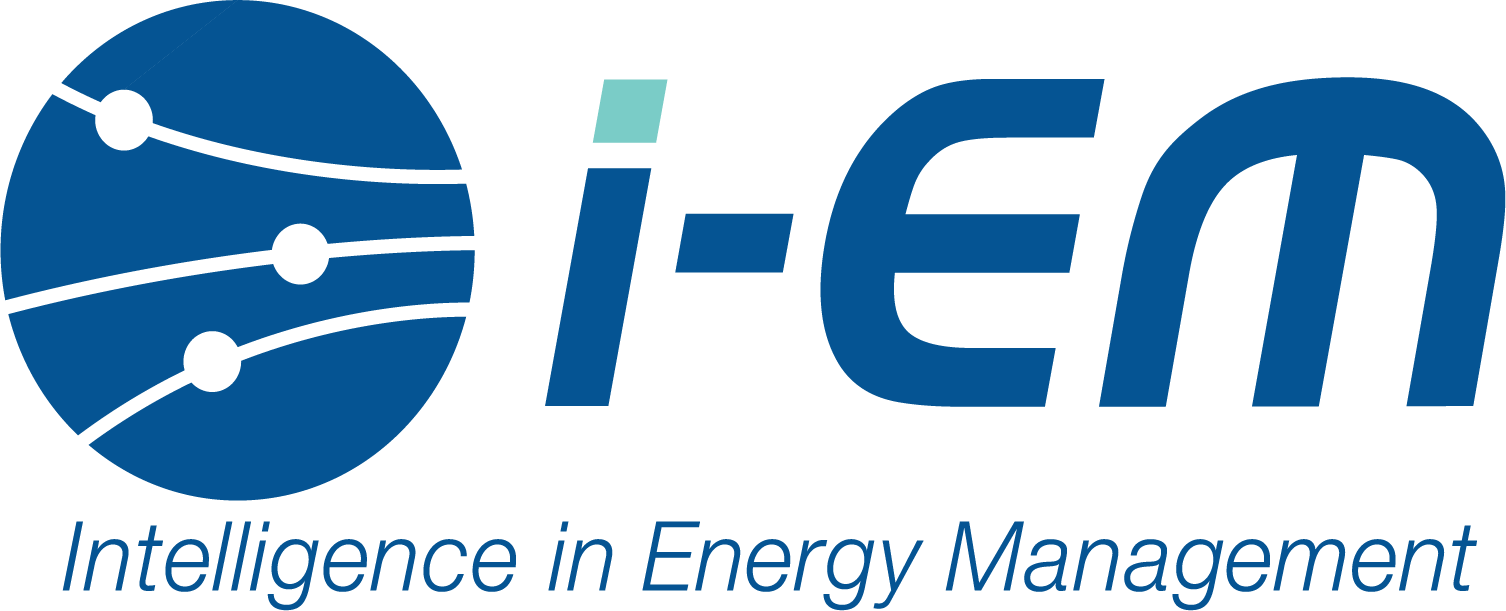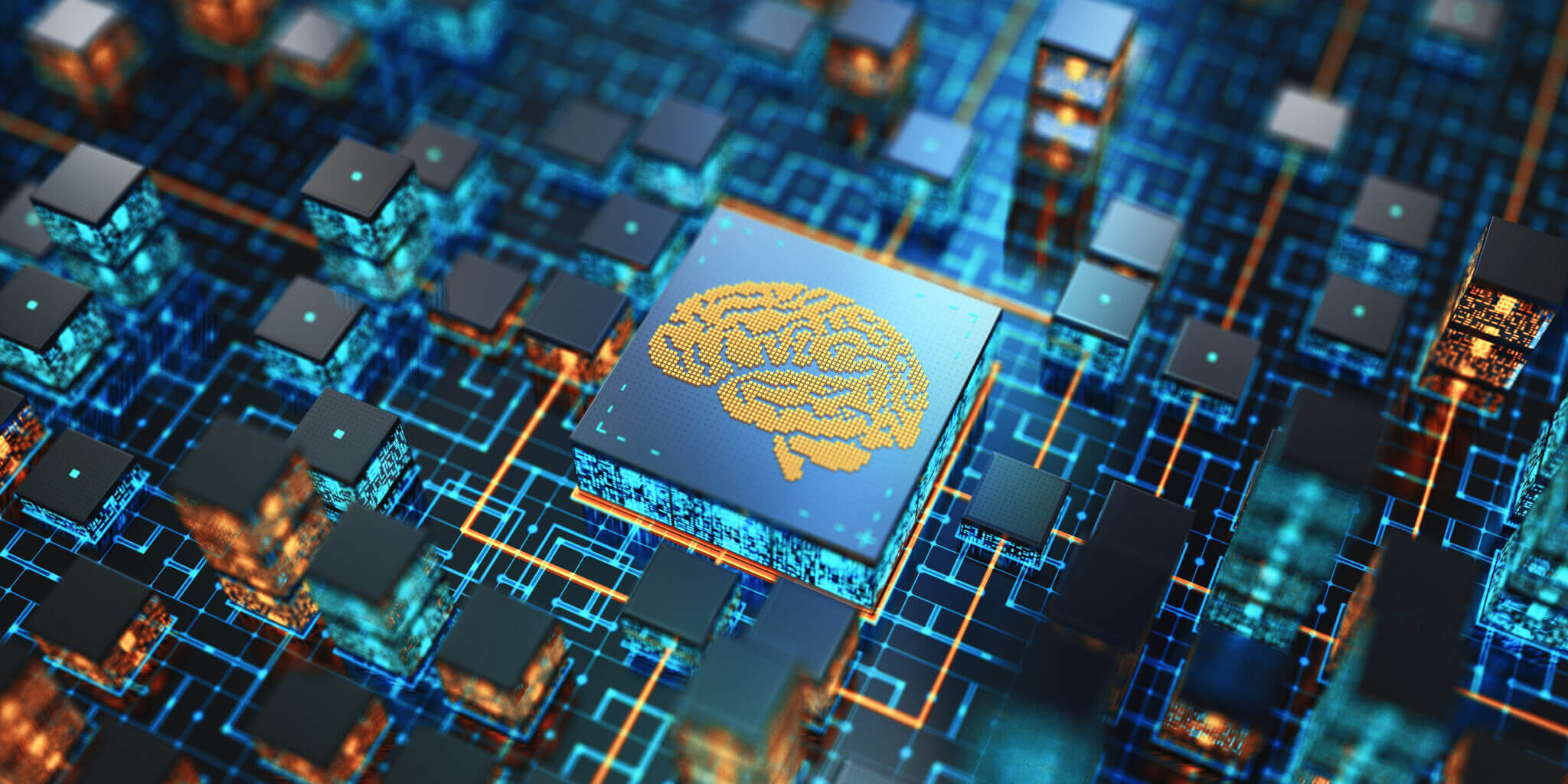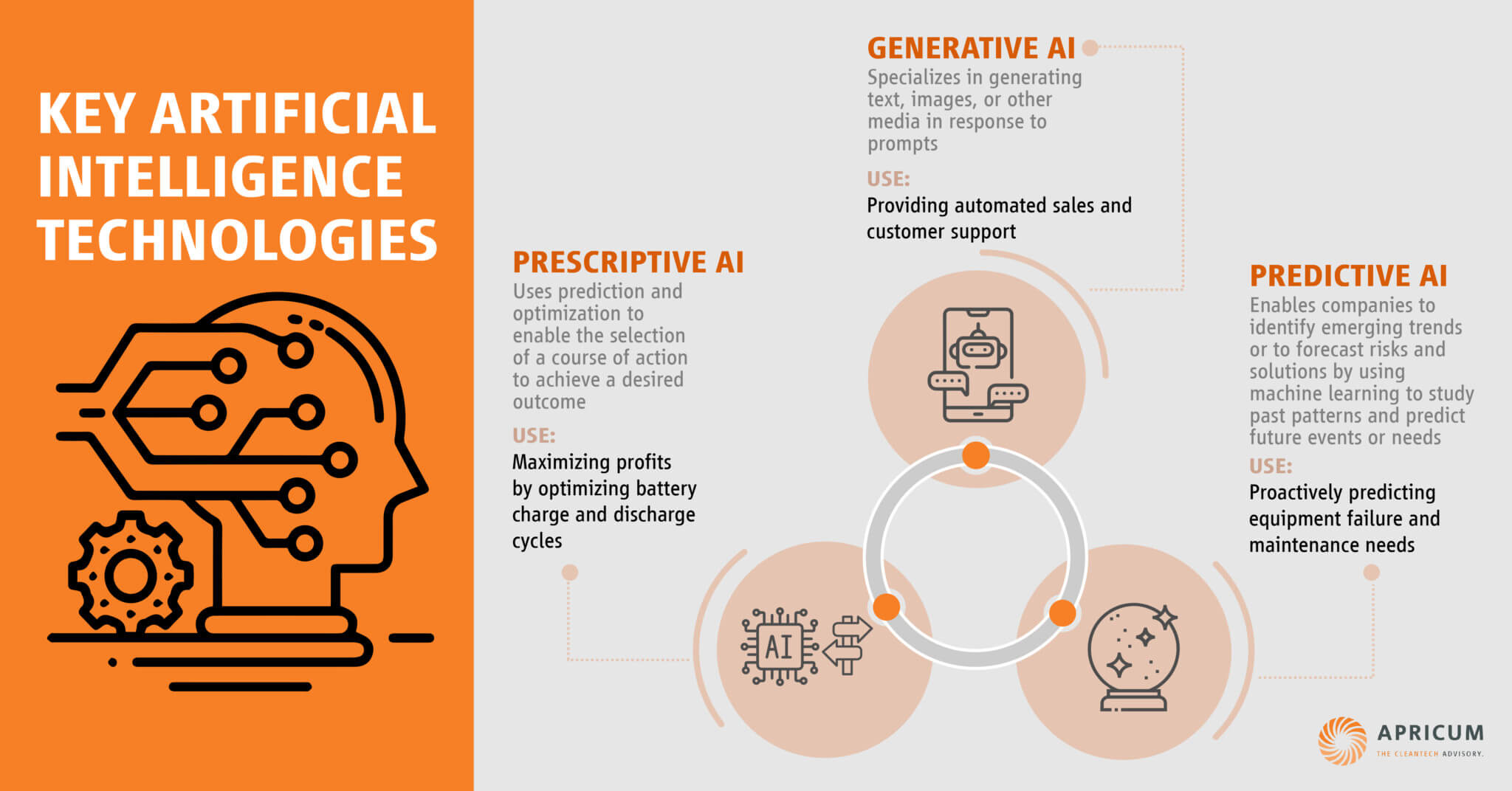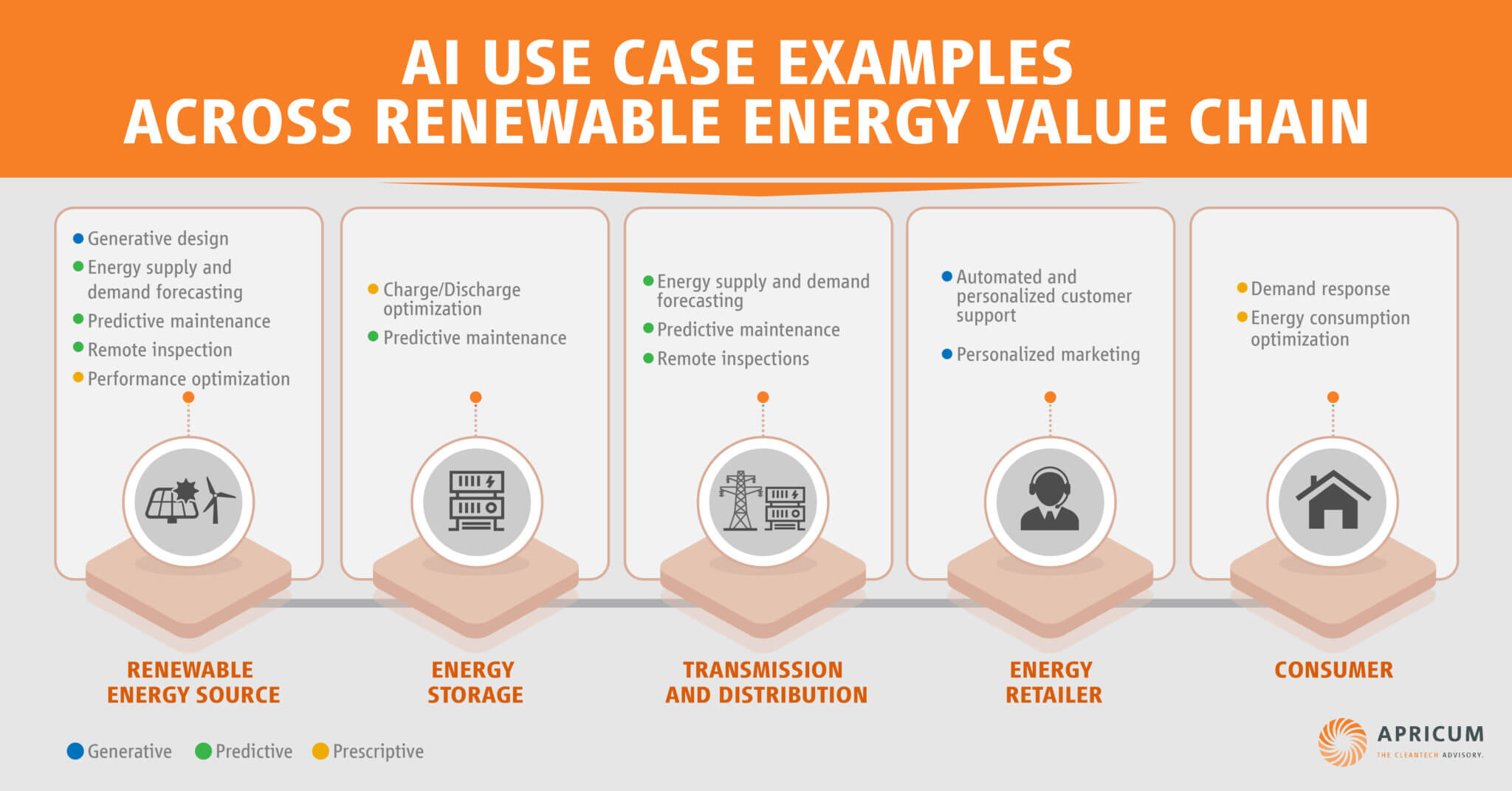- As artificial intelligence deployment accelerates across industries, it enables companies to improve customer experience, increase productivity and reduce costs
- Renewable energy industry can explore artificial intelligence in more widely adopted applications, such as predictive maintenance, while some companies may already benefit from the recent developments in generative AI, like ChatGPT
From logistics, transportation and business to social media, sports and fast food, the artificial intelligence (AI) boom has proven that there is no limit to the number of industries that are benefiting from machine-assisted optimization or prediction solutions. Most recently, interest in AI has also been boosted by the release of ChatGPT and similar technologies, that have given their users an ability to generate sophisticated text and image outputs using simple text prompts. In fact, Google searches for “AI” and “Artificial intelligence” have quadrupled in the last year.
Organizations do not necessarily have to implement the most cutting-edge artificial intelligence models to be successful.
While organizations do not necessarily have to implement the most cutting-edge artificial intelligence models to be successful, it is always valuable to explore available technology options and understand if and how they can benefit the company. In this article, we will explore how renewable energy companies in particular can take advantage of the latest AI breakthroughs to drive growth and improve efficiency in their operations. We will cover some of the potential new applications for the generative AI, as well as other forms of AI across the renewable energy value chain.
GENERATIVE AI
Created by OpenAI, ChatGPT is the most famous example of generative AI. Using machine learning algorithms to analyze and understand patterns, ChatGPT reached 1m users within record-breaking 5 days following its release in November 2022. Once prompted by a human, this tool is able to generate nearly any text answer, from a script for a new television episode to finding errors in computer code – all based on the more than 8 million text documents fed into it by its creators.
Not only can ChatGPT and similar so-called large language models create new content, they can also tailor the tone and style according to the given constraints. Within the renewable energy value chain, this ability makes such technology the ideal tool for transforming customer interactions in the utility industry. Balancing cost optimization and customer experience in communicating with customers is often a big challenge for energy retail. Generative AI can help to take machine-assisted interactions to the next level by acting as personalized smart assistants that use language most suitable for each individual, provide just the right amount of information and can even offer customized marketing promotions.
More generally, generative AI is a technology that can create different forms of content – not only text, but also images, video, audio and even computer code. It also has the potential to revolutionize engineering processes through its rapidly developing subfield, generative design. Engineers can quickly assess the viability of different automatically generated designs based on specific constraints, thereby creating optimized designs for performance, production cost, or other parameters. In a renewable energy context this can be applied to a range of technologies, both at the equipment and asset level.
For example, generative AI can be used in wind turbine design to optimize the shape of the blades to maximize energy production by simulating performance in various wind patterns. The number of possible iterations using generative AI surpasses what is possible without the technology, enabling engineers to optimize every detail of the design for performance, even accounting for unique conditions at a particular location.
On an asset level, generative AI can analyze site imagery to determine the best locations for solar panel installations based on factors such as insolation, shading and weather patterns. It can create highly detailed CAD designs considering the specific topography of the site and maximizing asset yield.
Generative AI is a relatively new field that is currently going through a Cambrian explosion of new applications – the mentioned use cases are just few of the many examples. The potential for its application across industries is only limited by companies’ creativity and access to training data.
PREDICTIVE AND PRESCRIPTIVE AI
In addition to generative, there are two other main types of AI, predictive and prescriptive, that can be used to predict future outcomes and offer recommendations on what actions to take to achieve a particular goal, respectively.
Renewable energy companies can explore the potential of these AI technologies to reduce costs and optimize performance across the value chain. Using a mix of predictive and prescriptive AI technologies can enable companies to optimize business processes, supply chains and other complex systems. Some examples of their applications in renewable energy, applicable for companies from IPP to O&M to energy retailers, include:
- Energy forecasting (predictive): Forecast renewable energy production (e.g., based on weather data) and consumption (based on past usage patterns) to help energy providers reduce costs and ensure that they are meeting demand.
- Remote inspections (predictive): Apply computer vision models to analyze satellite or drone imagery and detect anomalies – especially for remote sites.
- Predictive maintenance (predictive): Predict equipment failure based on anomalies detected in sensor data. This can help to reduce downtime and increase the reliability of the systems.
- Performance optimization (prescriptive): Using prescriptive algorithms, determine optimal settings of equipment (e.g., wind turbine yaw angle) to maximize energy output.
- Energy storage asset optimization (prescriptive): Optimize charging and discharging cycles on a battery, for example, by storing energy when it is cheap and feeding it into the grid when it is more expensive, while minimizing degradation of the battery.
- Demand response (prescriptive): Provide recommendations to energy consumers on when to increase and reduce their consumption to be able to match energy production volumes and therefore, reduce overall cost of the system.
AI IN THE RENEWABLE ENERGY SPACE
In fact, a variety of companies in the renewable energy space have already begun to successfully use AI in their operations – including new companies focused on providing AI-based services as well as industry incumbents.
 ECOPPIA
ECOPPIA
Ecoppia uses steams of data received from solar PV sites, to determine which panels need cleaning. This information is used to direct Ecoppia’s autonomous cleaning robots – helping to avoid soiling losses in energy production. The company also uses predictive maintenance algorithms on the robots to prevent their potential malfunctions and disruptions in the service.
 I-EM
I-EM
Based in Germany, i-EM is an advanced energy analytics company that provides a range of advanced analytics solutions for hydro, solar and wind assets. For example, Power Forecast allows predicting power output from one hour ahead up to 15 days ahead, using real-time data from wind turbines. On the other hand, i-EM’s Predictive Maintenance software continuously monitors data from sensors and predicts malfunctions at the component level.
![]() ESO
ESO
UK’s National Grid Electricity System Operator (ESO) is testing AI models developed by non-profit Open Climate Fix to forecast near-term solar power generation. Open Climate Fix’s AI models use terabytes of satellite data and additional sources to provide granular, precise weather forecasts. The models, including MetNet and GraphCast, have shown to be three times more accurate than ESO’s traditional forecasting methods. This increased precision could help ESO plan production of renewable electricity better to be able to reduce the need for fossil fuel energy held in reserve.
 ENGIE
ENGIE
French multinational electric utility company ENGIE has launched a new energy efficiency service that uses data analytics to help commercial and industrial customers optimize energy consumption. The service, called EnergySufficiency, uses AI and machine learning algorithms to identify areas for potential energy savings and improve energy management systems. As a three-way partnership with Microsoft and Schneider Electric, EnergySufficiency has already been implemented at several ENGIE customer sites, resulting in reduced energy consumption and costs.
WHERE TO START
To begin implementing AI into their operations, renewable energy companies first need to prioritize potential use cases based on their value and feasibility of implementation. Depending on their existing capabilities, they can choose to develop solutions internally, acquire a solution provider, or select from the available options in the market. Additionally, companies must ensure that they have access to the right data sets, as AI solutions are only as good as the data they are trained on. For example, predictive maintenance solutions will not be accurate unless there is a continuous and accurate data stream from equipment sensors. With generative AI, high relevance and personalization of created content is dependent on the availability of the data sets (e.g., history of previous communications with the customers) too.
AI presents a significant opportunity for renewable energy companies across the value chain to optimize their operations, reduce costs and improve performance. By prioritizing use cases and ensuring they have the right talent (inhouse or outsourced) and data in place, companies can successfully implement AI solutions and reap the benefits of this technology.
HOW APRICUM CAN HELP
Driving the global energy transition forward, Apricum is the strategy consulting and transaction advisory firm exclusively dedicated to renewable energy and cleantech. From corporate strategy and business model design to finance and transaction advisory, we leverage decades of experience to ensure smooth financial transactions while unlocking long-term success for companies, investors and public institutions. If you would like to learn more about digitalization in the renewable energy space or how we can enable your organization to compete and win in the digital energy industry reach out to Apricum Managing Partner Nikolai Dobrott.
This article was written by former staff members Florian Mayr and Alexandra Popova.



